
31 Fascinating Facts About Sharks
Whether you’re a ‘Jaws’ fanatic or just want to live every week like it’s Shark Week, you'll want to read up on these fascinating facts about sharks.
2023-07-28 22:15
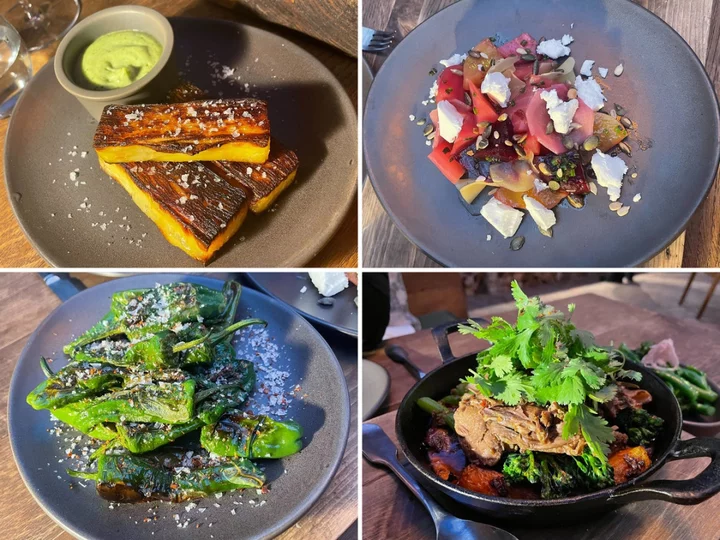
In Horto: Hearty, outdoorsy fare in a secret London Bridge garden
Walking into In Horto feels like walking into someone’s garden after the green thumbed designers of Your Garden Made Perfect have had their way with it. Stylish yet homely, with thought put into making every corner feel like you’re stepping into someone’s al fresco dinner party – hexagonal red brick flooring, rattan lamp shades and roof, wooden dining tables and chairs, as well as rustic dishes and serving plates. Potted plants welcome you at the entrance and vines twirl around the edges of the restaurant, which gives it an even more cloistered feeling. Just a five minute walk from London Bridge, right next to Flat Iron Square, In Horto has a distinctly different vibe to its packed surroundings. There’s the Borough Market crowd, where inching behind tourists is only made worth it if you procure a sausage roll from the Ginger Pig (mmm, dreamy); while Flat Iron Square boasts a hipper, boozier clientele. In Horto offers a bit of an oasis from both – a quieter, calmer place to sit down and have a meal. In Horto is a venture by TVG Hospitality, also known as The Venue Group, which boasts Mumford and Sons member Ben Lovett as one of its backers. The group also operates Flat Iron Square, which it moved from its original location on the corner of Southwark Bridge Road and Union Street to its current home last year. So it makes sense that the company is trying to develop the area by providing more restaurants with different concepts – it also opened Carrubo next to In Horto, a Mediterranean-inspired “light bites” place. The clue to why the restaurant feels so much like a garden party is in the name; In Horto in Latin is “in the garden”. The cooking on display here is very much focused on outdoorsy, wood-fired cooking, with a beautiful large domed oven taking pride of place behind the counter. Almost every dish is baked, roasted or grilled in this hard-working piece of equipment, bar things like the charcuterie board or the burrata and caponata, but even that has a touch of fire with the addition of smoked white balsamic dressing. In Horto’s menu moves with the seasons, but some things that are a staple and absolutely worth having again and again. The confit potato chips, which have been described as an “uncanny” dupe of Quality Chop House’s own version, are very, very good – layers of nearly paper thin potatoes layered and cooked in a thick wedge, before being portioned into chunky batons and roasted so that they caramelise and crisp up on the outside, but retain a delicious softness on the inside. The heritage beetroot with vegan feta and sunflower and pumpkin seeds also went down a treat, with the earthy, gorgeously red and purple root vegetables allowed to shine. We were big fans of the ’nduja butter and burnt onion butter that can be ordered and slathered with relish on bread. Also enjoyed were tenderly shredded venison batons ensconced in crispy crumbs, and while I generally find padron peppers to be a bit… well, boring, In Horto’s were covered in a healthy sprinkling of Aleppo salt that gave the soft, slightly charred vegetables that much-needed crunch. The mains were hearty and great for sharing, although perhaps less exciting than the starters and sides. There’s only so many roasted vegetables you can eat before it starts to taste a little monotonous. Having said that, the slow roasted braised lamb was a triumph; tender and juicy, with a delicious amount of fat that melts on the tongue. The real joy of In Horto’s menu is that it is all made to be shared, which I love. There is something so comforting and communal about passing dishes to one another, making sure everyone tries a little bit of everything. After all that food, it’d make sense that there was little room for dessert. Except I’m nothing if not determined. We had to be sensible though – the tarte tatin with vanilla ice cream sounded bloody lovely, but would have been far too much and we would have had to be rolled home. Being the balanced and rational eaters we are, we opted to share the rich, luxurious chocolate mousse with honeycomb and salted caramel ice cream. Unwise? Perhaps, just a little. But I have no regrets. In Horto, 53b Southwark St, London, SE1 1RU | inhorto.co.uk | 020 3179 2909 Read More The Union Rye, review: Finally, a decent restaurant in this charming East Sussex town Forest Side: Heavenly Cumbrian produce elevated to Michelin-starred proportions I tried the food at Idris Elba’s restaurant – he should stick to wine
2023-07-28 21:15
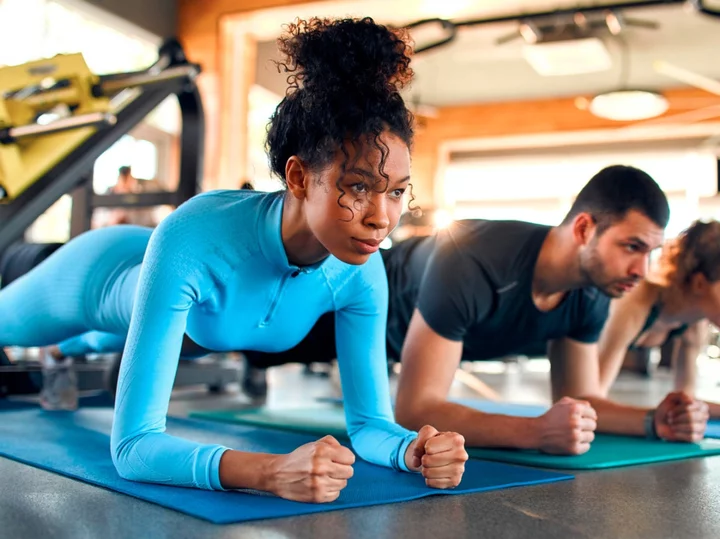
The two best exercises for lowering blood pressure, according to study
Exercises such as “wall sits” could be the best form of activity to help people reduce blood pressure, a new study suggests. Other physical activity including cardio, resistance training and HIIT workouts are also good for bringing down resting blood pressure levels, researchers found. But isometric exercises – those that involve engaging muscles without movement, such as wall sits and planks – provide the best results, they said. The study, published in the British Journal of Sports Medicine, saw researchers conduct analysis on previous studies looking at exercise and blood pressure. Some 270 studies were included in the final analysis which contained data on almost 16,000 people. They examined the impact different exercises had on systolic blood pressure, which notes the force at which the heart pumps blood around the body; and diastolic blood pressure, the resistance to the blood flow in the blood vessels between heartbeats when blood is pumped around the heart. The researchers, led by academics at Canterbury Christ Church University in Kent, found that there were significant reductions in resting blood pressure following cardio (aerobic exercise); dynamic resistance training, such as squats, press-ups and weights; high intensity interval training (HIIT); and combined training and HIIT. But the largest reductions were seen after isometric exercise training. A secondary analysis on specific types of exercises found the most benefit was seen among those who performed “isometric wall squats” and among runners. The academics said that current exercise recommendations for the prevention and treatment of high blood pressure are based on “older data” and suggest that it may be time to review the current guidelines. “Aerobic exercise training, dynamic resistance training, combined training, high-intensity interval training and isometric exercise training are all significantly effective in reducing resting systolic and diastolic blood pressure,” they wrote. “Overall, isometric exercise training is the most effective mode in reducing both systolic and diastolic blood pressure. “These findings provide a comprehensive data driven framework to support the development of new exercise guideline recommendations for the prevention and treatment of arterial hypertension.” For the average adult high blood pressure is considered to be from 140/90mmHg. When a person’s blood pressure is too high it puts extra strain on blood vessels, heart and other organs, such as the brain, kidneys and eyes. Persistent high blood pressure can lead to a number of serious health problems including heart attacks, strokes and vascular dementia. While there are medications which can help, people can make a number of life-style changes to help bring their blood pressure down including regular exercise, losing weight, cutting back on caffeine, alcohol and salt. Read More Dating app screenshot culture is out of control Husband fired from family business after wife roleplayed with reborn dolls The bowel cancer symptom George Alagiah wished he’d caught earlier Charity boss speaks out over ‘traumatic’ encounter with royal aide Ukraine war’s heaviest fight rages in east - follow live
2023-07-28 19:47
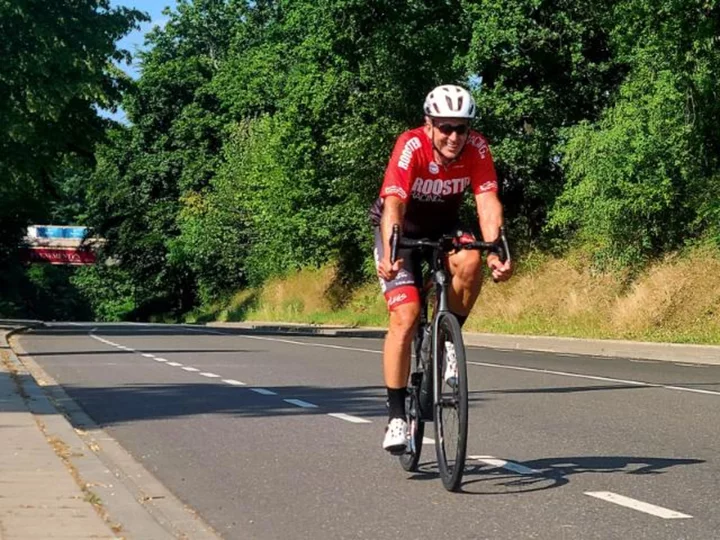
Passenger uses AirTag to track the bike his airline lost
When your luggage goes missing, it's bad enough. Tackling the start of your vacation without your clothes or toiletries? It's not something most of us want to do. But when your luggage itself is the reason you're traveling in the first place, it gets considerably worse.
2023-07-28 19:29

Adidas to release second batch of Yeezy sneakers after breakup with Ye
Adidas is releasing a second batch of high-end Yeezy sneakers after cutting ties with rapper Ye, formerly known as Kanye West
2023-07-28 18:56
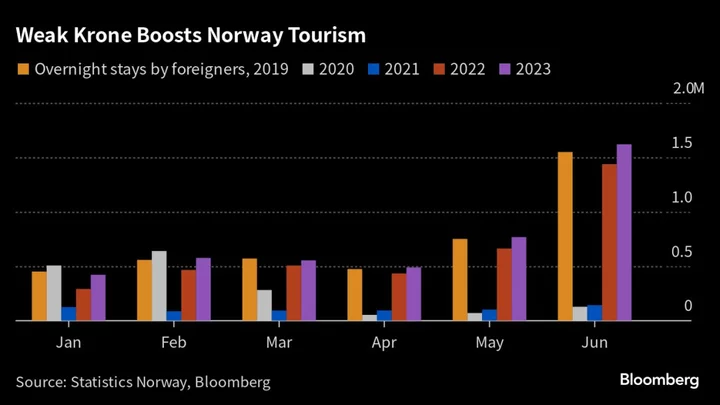
Norway Tourism Gets Boost From Foreigners on Krone
Norwegian tourism is thriving after a weaker krone made the famously expensive Nordic country cheaper to visit and
2023-07-28 18:29

Experts reveal the most unhygienic things in your kitchen – and how to get them clean
It’s likely there are countless things in your kitchen which look clean, but actually, they’re filthy. Could your dishcloths be making you sick? When was the last time you washed your tea towels? And do we really need to bleach the sink more than once a month? We asked an expert to find out. Knobs, door handles, and buttons The buttons and dials on your kitchen appliances could be a germ-fest. “People often neglect to clean these areas of the kitchen,” says Danielle Mason, a cleaning content creator – or ‘cleanfluencer’ – who creates tutorials and videos on TikTok and Instagram. “Most of the time, they don’t think it is important, but as you’re commonly handling raw meat and food, it’s extremely important to keep these areas clean, due to cross-contamination. “Always sanitise with a cloth – I like to do this with Zoflora, as it leaves a great smell afterwards, and kills bacteria from dirty fingers.” Cloths If what you clean with isn’t clean, chances are, your kitchen isn’t either. “I always leave my cloth to soak in bleach before going to bed every night,” says Mason. “This enables a new start in the morning with no bacteria. Also, make sure you’re replacing the cloths – I would suggest a new one every two weeks, whilst still bleaching every night. And make sure you’re not using this cloth on anything other than the kitchen, as you do not want to cross-contaminate.” Sponges Mason stresses sponges are unhygienic, as they’re constantly damp and can carry E. coli. “People tend not to use sponges, as they carry so many more germs, and even putting them in the microwave will not kill all of them. Avoid a sponge where possible.” Dish towels Dish towels and tea towels may not be changed anywhere near often enough. “You should have one for every day of the week, as they carry so many bacteria and germs, which get spread across the kitchen. If you’re drying pots and pans, and then wiping down your surfaces, it’s not good,” she says. Chopping boards Chopping boards – particularly wooden ones – could be a haven for bacteria. “You should have a different colour for different types of food, one for meat, fruit, and other foods,” advises Mason. “The best way to clean them is in a dishwasher, as it’s good to get rid of all the germs due to the very high heat. If you don’t like the dishwasher, then boil the kettle water and leave the chopping boards to soak in it. I use a steam cleaner on mine, as it kills 99.9% bacteria and there are no chemicals.” It is best to avoid wooden chopping boards altogether, as these cleaning methods may damage them. Kitchen sink “This is a massive breeder of bacteria and grime; a distinct microbiome is found in sinks. “The plumbing area found beneath sinks revealed microbial communities dominated by a group of bacteria called Proteobacteria. This phylum includes pathogens such as Salmonella and E. coli, which can cause serious disease,” Mason shares. “I’ve always been taught never to wash my hands in the sink, and to never throw dirty water down the sink. You wash your cups and plates in the sink and prepare food, so it should always be kept clean, and nothing from outside the kitchen should cross-contaminate that. For example, never wash your floors and put dirty water in your kitchen sink, always throw it down the toilet.” How do you possibly clean the inside of your sink and drains? “Baking soda and vinegar is the best way to clean your sink out, or bleach, but you must be careful with bleach, as it can stay in the bottom of your sink, depending on the material it’s made of. I clean my sink out every day.” Pipes and cupboards around your sink could be leading you to have a rodent problem. “You can prevent mice and rodents from entering the kitchen by covering any small crevices or cracks. It is also important to repair leaks as soon as they happen, as they can come through the pipes,” she says. Fridges “Deep clean [your fridge] every two months. A normal cleaning – the wiping of shelves – should be done every other day with soapy water. For any bad smells, use baking soda, which will absorb the smell from the fridge,” Mason continues. “The fridge is a breeding ground for salmonella, E. Coli and other bacteria.” Bins Where you throw your waste away could be a breeding ground for germs. “Make sure you keep [outdoor] rubbish bins away from your house, and make sure you empty your bin as soon as it’s full,” advises Mason. “I personally do not keep a bin in the kitchen, I use a bag and I take that out by the end of the day, but if you are using a bin, make sure you bleach it with hot kettle water, to keep it smelling fresh.” Read More This is why you keep waking up at 4am – and what you can do about it TV chef James Martin reveals cancer diagnosis in apology over ‘bullying’ allegations Bursts of activity that make you huff and puff ‘linked to reduced cancer risk’ Charity boss speaks out over ‘traumatic’ encounter with royal aide Ukraine war’s heaviest fight rages in east - follow live
2023-07-28 17:51

Beauty salon twist offers new perspective for art exhibition
A new art exhibition that has been made to look like a beauty salon where viewers are invited to look at works while sitting on salon chairs is set to open in Edinburgh. American artist Christian Noelle Charles launches the show on Friday at Edinburgh Printmakers. What A Feeling Act 1 will run until September 17. Artworks are in place of salon mirrors, and a radio will play excerpts of conversations with the artist. Ms Charles said she wanted to create a place of “relaxation and security” and a “new way of seeing”. She said: “I grew up going to beauty salons. I have always got my hair done since I was a kid. And I wanted to create a place of relaxation, security, that sense of getting ready is like the whole social aspect of it. “Creating these types of sets and installations change the perception of how people should look at art and also just feel relaxed in the space instead of analysing it too much.” Ms Charles composed a series of screenprints that explore and convey the gestures of being judged, analysed, and satisfied within a format of salon. Some examples of these gestures are hand crossing, lowering the glasses and tapping of the fingers. Ms Charles added: “As a black American, I was raised through the sense of gathering where barbershops and beauty salons were a centre of community and neighbourhood. “I feel like it is a good hybrid place to meet different cultures. In terms of black community in the African diaspora, salons were places of gathering that would do beauty or nails and was essential in terms of understanding one another, making sure that we look our best and what our culture represents from that. “Also, the idea of the beauty salon was a younger and modern take on that sense of the salon when it comes to showcasing paintings or prints in a specific way. It’s a pun on ‘The Salon’ within a beauty salon. “Since the work that I’ve been doing has been focused on getting ready and beauty and the essence of black women and how hard they work.” Ms Charles currently lives in Glasgow after studying for a masters degree at Glasgow School of Art. She is originally from Syracuse in New York. Read More Charity boss speaks out over ‘traumatic’ encounter with royal aide Ukraine war’s heaviest fight rages in east - follow live Bursts of activity that make you huff and puff ‘linked to reduced cancer risk’ Study uncovers what nap times reveal about young children’s brain development New outfits in Highland dress collection help museum tell the story of modern tartan
2023-07-28 16:27
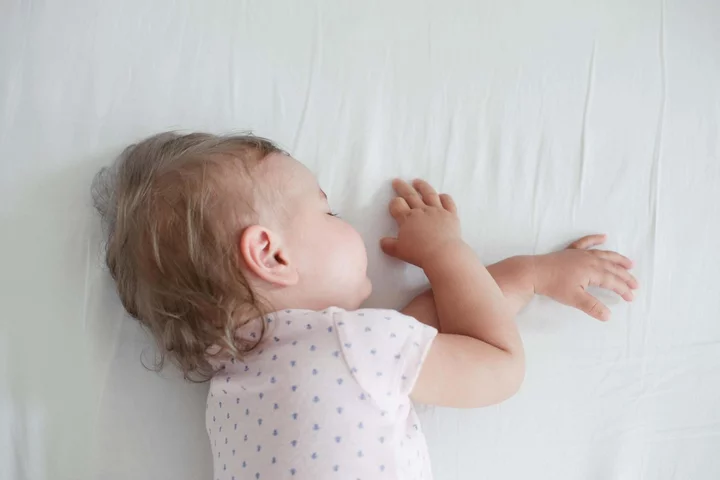
Study uncovers what nap times reveal about young children’s brain development
Babies and toddlers who nap a lot may have smaller vocabularies and poorer memory and thinking skills, research suggests. Parents and guardians all over the world worry about their children getting either too little or too much sleep. But a new study reveals that some children are better at consolidating information during sleep, so they nap less frequently. Those with fewer words and poorer cognitive skills need to nap more frequently, the researchers found. Young children will naturally nap for as long as they need and they should be allowed to do just that Dr Teodora Gliga, University of East Anglia However, the findings suggest that reducing naps for these children will not improve brain development, and that they should be allowed to nap as frequently and for as long as they need. Lead researcher Dr Teodora Gliga, from the University of East Anglia (UEA), said: “There is a lot of parental anxiety around sleep. “Parents worry that their kids don’t nap as much as expected for their age – or nap too frequently and for too long. “But our research shows that how frequently a child naps reflects their individual cognitive need. “Some are more efficient at consolidating information during sleep, so they nap less frequently. “Children with smaller vocabularies or a lower score in a measure of executive function nap more frequently.” She added: “Young children will naturally nap for as long as they need and they should be allowed to do just that.” The research team studied 463 infants aged between eight months and three years during lockdown in 2020. What we found is that the structure of daytime sleep is an indicator of cognitive development Dr Teodora Gliga, University of East Anglia Parents were asked about their children’s sleep patterns, their ability to focus on a task, keep information in their memory, and the number of words that they understood and could say. They also asked parents about their socioeconomic status – including their postcode, income, and education – and about the amount of screen time and outdoor activities their child engaged in. Dr Gliga said: “Lockdown gave us an opportunity to study children’s intrinsic sleep needs because when children are in childcare, they rarely nap as much as they need to. “What we found is that the structure of daytime sleep is an indicator of cognitive development. “Infants with more frequent but shorter naps than expected for their age had smaller vocabularies, and worse cognitive function. “We also found that this negative association between vocabulary and frequency of naps was stronger in older children.” She added that although the majority of parents reported that lockdown did not impact their children’s sleep, parents from lower socioeconomic backgrounds were more likely to report a worsening in sleep. Caregivers should use a child’s mental age and not chronological age to ascertain a child’s sleep needs Dr Teodora Gliga, University of East Anglia “Screen time increased during lockdown and outdoor activities decreased but these did not explain differences in children’s sleep,” Dr Gliga said. She continued: “Our findings suggest that children have different sleep needs – some children may drop naps earlier because they don’t need them anymore. “Others may still need to nap past three years of age. “In the UK, preschools enrolling three to five-year-olds have no provisions for napping. “Caregivers should use a child’s mental age and not chronological age to ascertain a child’s sleep needs.” The study, published in the JCPP Advances journal, was led by UEA in collaboration with researchers at the University of Oxford, Oxford Brookes University, the University of Leeds and the University of Warwick. It was funded by the Economic and Social Research Council (ESRC). Read More Charity boss speaks out over ‘traumatic’ encounter with royal aide Ukraine war’s heaviest fight rages in east - follow live Bursts of activity that make you huff and puff ‘linked to reduced cancer risk’ New outfits in Highland dress collection help museum tell the story of modern tartan 5 expert-approved ways to stop your hair colour fading this summer
2023-07-28 16:27
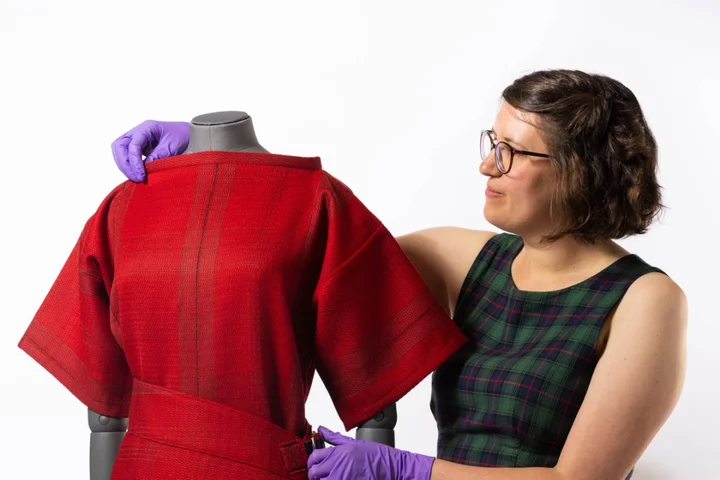
New outfits in Highland dress collection help museum tell the story of modern tartan
National Museums Scotland has acquired eight outfits from contemporary Highland dress designers in a bid to tell the story of tartan in the 21st century. They have been added to the national collection of Highland dress, which charts how it has evolved since the 17th century. The acquisitions mark the culmination of a five-year project supported by the William Grant Foundation. A new online hub is launching on Friday, offering detailed images and descriptions of the latest acquisitions along with three films featuring interviews with designers and makers. The collection now includes modern designers like Prickly Thistle and Acme Atelier. The foundation’s research fellow Rosie Waine said they show how Highland dress is being adapted to the modern day. She said: “There is a perception that Highland dress never changes, but through working with contemporary makers, this project highlights a flourishing living tradition that continues to adapt and evolve. “These new acquisitions showcase incredibly skilled makers and production from across the country. “They join our existing collection to provide a comprehensive timeline of Highland dress from the 17th century to the modern day, highlighting its role as an icon of an ever-changing Scotland.” Read More Charity boss speaks out over ‘traumatic’ encounter with royal aide Ukraine war’s heaviest fight rages in east - follow live
2023-07-28 16:24
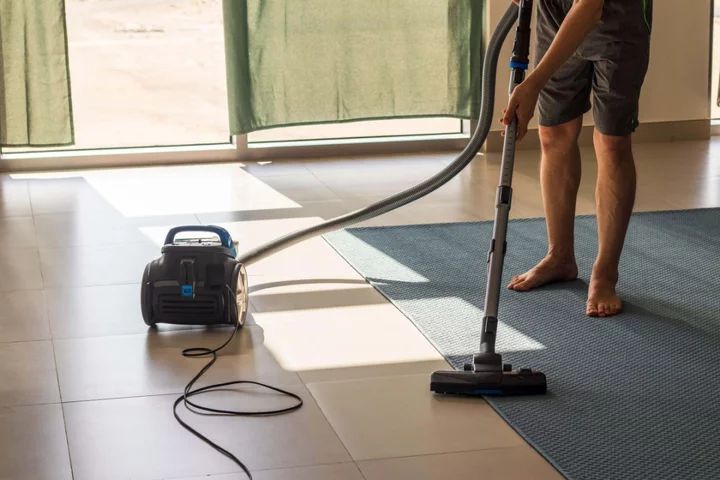
Bursts of activity that make you huff and puff ‘linked to reduced cancer risk’
Short bursts of daily activity that make you huff and puff – such as playing high-energy games with children – could help reduce the risk of cancer, research suggests. According to the study, a total of just four-and-a-half minutes of vigorous activity – done in bursts of around one minute each – during daily tasks could reduce the overall risk of cancer by 18 per cent, and the risk of some cancers linked to physical activity by up to 32 per cent. Other activities could include vigorous housework, carrying heavy shopping around the supermarket, or bursts of power walking. Lead author Professor Emmanuel Stamatakis, of the Charles Perkins Centre, University of Sydney, Australia, said: “We know the majority of middle-aged people don’t regularly exercise, which puts them at increased cancer risk, but it’s only through the advent of wearable technology like activity trackers that we are able to look at the impact of short bursts of incidental physical activity done as part of daily living. “It’s quite remarkable to see that upping the intensity of daily tasks for as little as four to five minutes a day, done in short bursts of around one minute each, is linked to an overall reduction in cancer risk by up to 18 per cent, and up to 32 per cent for cancer types linked to physical activity.” Cancer types linked to physical activity are those where not exercising increases the risk of developing the disease. The cancers associated with physical activity included liver, lung, kidney, gastric cardia (a type of stomach cancer), endometrial, myeloid leukaemia, myeloma, colorectal, head and neck, bladder, breast and esophageal adenocarcinoma (cancer of the oesophagus). Published in Jama Oncology, the study used data from wearable devices to track the daily activity of more than 22,000 people who do not exercise. Researchers then followed the group’s clinical health records for close to seven years to monitor for cancer. They found that as few as four to five minutes of vigorous intermittent lifestyle physical activity (Vilpa) was associated with a substantially lower cancer risk compared with those who undertook no Vilpa. Vilpa was coined by researchers at the University of Sydney’s Charles Perkins Centre to describe the very short bursts of activity – around one minute each – we do with gusto each day. Vilpa is a bit like applying the principles of high-intensity interval training (HIIT) to your everyday life Professor Emmanuel Stamatakis, University of Sydney Prof Stamatakis said: “Vilpa is a bit like applying the principles of high-intensity interval training (HIIT) to your everyday life.” He added that adults who do not exercise are at increased risk of developing certain cancers such as breast, endometrial or colon. But, until recently, experts were not able to measure the impact of less structured forms of vigorous physical activity. In the study sample of 22,398 people with an average age of 62 who did not exercise in their leisure time, the researchers found 2,356 new cases of cancer (1,084 in physical activity-related cancer) over an average follow-up of 6.7 years. They found that a minimum of around 3.5 minutes of daily Vilpa was associated with up to an 18% reduction in cancer incidence, compared with no Vilpa, while 4.5 minutes of daily Vilpa was associated with up to a 32% reduction in the risk of cancers linked to physical activity. The researchers used data from the UK Biobank Accelerometry Sub Study and only included people who reported no leisure time exercise and no regular recreational walks. Read More TV chef James Martin reveals cancer diagnosis in apology over ‘bullying’ allegations Men have a problem – and it won’t be solved by either Andrew Tate or Caitlin Moran Husband fired from family business after wife roleplayed with reborn dolls
2023-07-28 16:19
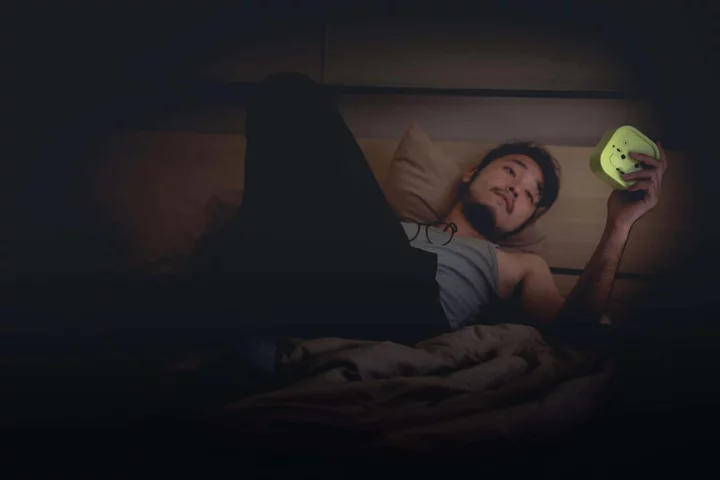
This is why you keep waking up at 4am – and what you can do about it
Ever find yourself awake, staring into space at four in the morning? Is it just a bad habit, or is there something more sinister going on? And why does it always seem to happen at 4am? “We start to experience less deep sleep after around four to five hours,” says Lisa Artis, deputy CEO of The Sleep Charity, who have partnered with Simba mattresses. And once we’re in that lighter sleep faze, we wake much more easily. If you generally fall asleep around 11pm – which is a very common bedtime, 4am wake-ups are more likely. And there are many factors leading to these inconvenient stirrings. Hormones “Sleep is guided by our internal clock or circadian rhythm. One of the most significant and well-known circadian rhythms is the sleep-wake cycle,” Artis continues. “Sleep is regulated by the levels of two hormones: melatonin and cortisol, which follow a regular 24-hour pattern. Melatonin assists you in dozing off, while cortisol helps get you up, and keeps you awake,” she explains. Keeping an eye on your hormones is important in preventing those late-night wake-ups. “Engage in calming activities before bedtime, such as reading, listening to soothing music, or practising relaxation techniques, like deep breathing or meditation,” says Dr Mariyam H. Malik, GP at Pall Mall Medical. Equally, pop your phone down for a bit. “Blue light from electronic devices can suppress melatonin production. Try to avoid screens for at least two hours before bedtime, or use blue light filters. It is best to charge them in a separate room overnight,” Malik adds. Diet Caffeine, heavy meals, alcohol, sugar, and a lack of magnesium or B vitamins could lead you to have a more disturbed night’s sleep, according to Malik. Sugar and carbohydrates may have a particular impact. “A diet high in sugar and refined carbohydrates can cause blood sugar fluctuations, leading to wakefulness during the night,” she says. “It’s unlikely you’ll feel hungry in the middle of the night if your blood sugar dips,” notes Artis, “but to reduce ungodly hour awakenings, trial alternatives for your last meal or snack of the evening. Instead of carb or sweet-based snacks, opt for protein-packed and magnesium-rich foods, like hard boiled eggs, cottage cheese, pumpkin seeds, spinach, dark chocolate, cashews, chicken thighs or turkey.” Protein can take the edge off your night-time hunger, she says, while magnesium is known to support sleep. Needing a wee Do you wake up needing to wee at the same time every night? “Try not to drink excessive amounts of fluids before bedtime,” advises Malik. “It’s important to stay hydrated, but try not to drink anything for around two hours before your usual bedtime. Go to the toilet before you go to bed to empty your bladder. ” Age and life stage “Sleep tends to become more disrupted as people get older,” Malik explains. “Sleep patterns change with age, and various factors can contribute to sleep disturbances in older adults. Some common reasons for sleep disruption in the elderly include changes in your circadian rhythm, decreased melatonin production, medical conditions or medications, and potential sleep disorders.” It can also affect women during the perimenopause. “The reproductive hormones – oestrogen and progesterone – are entwined with the sleep and relaxation hormones, melatonin and serotonin,” says Artis. “When oestrogen begins to fall before and during menopause, it can create a disturbance in the sleep-promoting hormone melatonin, meaning it can’t properly balance out cortisol. When this happens, the ability to fall and stay asleep is affected.” Recurring hot flushes, night sweats, dry skin, and low libido can signal waning oestrogen. Artis advises incorporating foods with high levels of phytoestrogens into your diet throughout the day to help with this. “Phytoestrogens imitate the natural estrogens found in your body. As a consequence, they can bind to your body’s oestrogen receptors and produce similar effects.” Try lentils, kidney beans, chickpeas, tofu, edamame, spinach, cauliflower and broccoli. Worrying Stress is not good for sleep. One study by Bupa even found that 32 million Brits wake up worrying about their health at precisely 4:05 am. The report, which surveyed 4,000 British adults, revealed that more than three-fifths of us wake up in the middle of the night. If you are finding yourself awake at all hours worrying, or waking up with stressful dreams, there are a few things that may help. “Keep a journal by your bedside and write down your worries before going to bed. This practice can help get your concerns out of your mind and onto paper, making it easier to let go of them temporarily,” says Malik. You may also want to “engage in mindfulness or meditation exercises before bedtime. Mindfulness can help you focus on the present moment, reducing anxiety about the past or the future.”
2023-07-28 15:55
